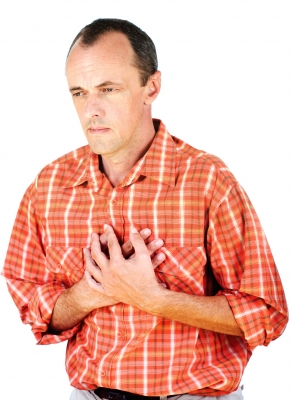Symptoms of a Heart Attack in Women
 Heart disease is not a ‘man’s disease’.
Heart disease is not a ‘man’s disease’.
Heart disease is the number one killer of women. It is more deadly than all forms of cancer combined. One in thirty-one US women die from cancer each year. One in three die from a heart attack annually.
Protect yourself by knowing your risk factors for heart disease, such as obesity, smoking, menstruation has stopped, high blood pressure, diabetes, high cholesterol, physical inactivity, and family history of arteriosclerotic heart disease before age 60.
According to Dr. Larry Weinrauch, very few pre-menopausal women have heart attacks, unless they smoke, have diabetes, or are on birth control pills for a long period of time. Smoking seems to be the biggest risk factor.
Heart disease symptoms can be different for women than men, which can lead to misdiagnosis and/or delayed treatment.
Heart attack warning signs for women:
Continue reading
Heart Attack vs. Panic Attack: When to seek medical attention

Heart disease impacts your heart muscle, blood vessels, and electrical system. Coronary artery disease is the most common form of heart disease. Coronary artery disease involves the build-up of plaque deposits on artery walls. This plaque build-up is called atherosclerosis. When this plaque ruptures it cause a blood clot to suddenly block an artery. If this happens within the heart, it causes a heart attack. When this occurs, it’s imperative you receive life-saving treatment within the first 30-minutes to prevent permanent damage and death.
Symptoms
Chest pain and breathing difficult are common symptoms for both a panic attack and a heart attack. Additional symptoms for both can include palpitations, dizziness, feelings of impending doom, burning sensation in the chest, numbness of hands and feet, unusual fatigue, fainting, and sweating. Panic attacks occur spontaneously, maybe triggered by a stressful event. Chest pains, as a part of anxiety, are not normally considered to be dangerous. However, chest pain and breathing difficulty can also be signs of a lack of blood flow to the heart muscle.
How do you differentiate?
Heart Attack:
- Increasing chest pain reaching max severity in a few minutes
- Constant pressure, pain, aching
- Left chest pain
- Pain that radiates from the chest to other locations
- Pain connected to movement or exertion
Panic Attack: Continue reading



